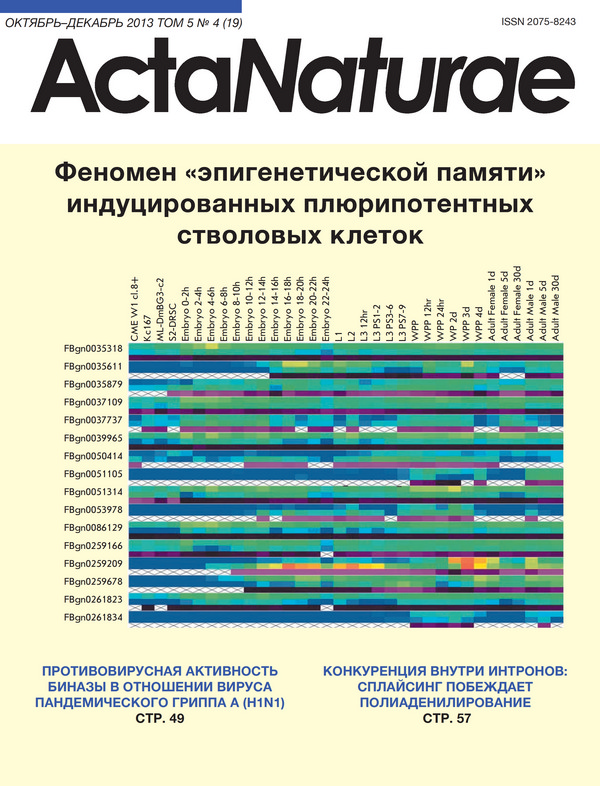Аннотация
Кэпирование, сплайсинг и полиаденилирование многих мРНК эукариот сопряжено с транскрипцией. Согласованность этих процессов обеспечивает правильное созревание РНК и создает разнообразие синтезируемых изоформ. Процессинг РНК представляет собой цепь событий, в которой окончание одного этапа связано с началом следующего. В этом контексте связь между сплайсингом и полиаденилированием считается важной для регуляции работы генов. Нами обнаружено, что скрытые сигналы полиаденилирования широко представлены в интронах Drosophila melanogaster. В результате анализа встречаемости генов, полностью расположенных в интронах других генов, установлено, что перекрывание в сигналах полиаденилирования встречается достаточно часто и затрагивает около 17% всех генов. Показано, что активность сигналов полиаденилирования, расположенных внутри интронов, подавлена: они функционируют, находясь в экзонах, но не в интронах. Как в транзиентной репортерной системе, так и в модельных геномных локусах транскрипция не останавливается в интронах in vivо. При удалении 5'-сайта сплайсинга включается использование сигналов полиаденилирования в интронах. Согласно анализу транскриптома Drosophila, сигналы полиаденилирования внутри интронов используются очень редко, и, по всей видимости, данные со-бытия регулируются при помощи особых механизмов. Наши данные подтверждают, что транскрипционный аппарат игнорирует преждевременные сигналы полиаденилирования, расположенные в интроне.







